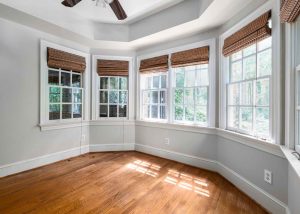Navigating the landscape of commercial real estate investing can be complex, but one crucial aspect often gets overlooked: common area maintenance, or CAM. While many investors focus on flashy property features and potential rental income, effective management of shared spaces plays a pivotal role in enhancing overall investment value. Think about it—common areas serve as the first impression for tenants and customers alike. They influence not only tenant satisfaction but also retention rates and property reputation.
But what does good CAM management really entail? How can it elevate your investment strategy to new heights? This blog explores the ins and outs of common area maintenance management, shedding light on its significance in the commercial realm. Keep reading to discover how prioritizing CAM can lead to greater financial returns while creating inviting environments that attract quality tenants—and keep them coming back for more.
Why CAM Management is Essential for Commercial Real Estate Investing
Effective CAM management is a cornerstone of successful commercial real estate investing. It directly influences tenant satisfaction and retention, which are critical for maximizing rental income.
When common areas are well-maintained, properties exude professionalism. This attracts high-quality tenants who see value in their environment. A clean and inviting space encourages longer leases and reduces vacancy rates.
Additionally, efficient CAM practices can lead to cost savings over time. Proactive maintenance prevents costly repairs down the line, ensuring that budgets remain intact.
Investors also find that maintaining appealing shared spaces enhances property values. Well-kept amenities provide a competitive edge in the market, increasing overall appeal to potential buyers or investors.
Neglecting CAM management can detract from investment returns and tarnish reputations within the industry. Prioritizing this aspect fosters long-term success in an ever-evolving commercial landscape.
The Importance of Regular Maintenance and Upkeep
Regular maintenance is the backbone of effective common area management. It ensures that shared spaces remain inviting and functional for tenants and visitors alike. When facilities are well-kept, they reflect professionalism and attention to detail.
Neglecting upkeep can lead to small issues growing into significant problems. A minor leak can escalate into water damage, costing thousands in repairs. Timely interventions save money in the long run.
Moreover, a clean and well-maintained environment enhances tenant satisfaction. Happy tenants are more likely to renew their leases or recommend your property to others.
Routine inspections play a crucial role in identifying areas needing attention before they become problematic. This proactive approach not only boosts property value but also fosters a sense of community among occupants.
Investing time in regular maintenance builds trust with tenants as it shows you care about their experience within the commercial space.
Strategies for Effective CAM Management
Effective CAM management requires a proactive approach. Start by establishing clear communication channels among all stakeholders. This includes property managers, tenants, and contractors.
Next, create a detailed budget for common area expenses. Allocate funds wisely to cover maintenance, repairs, and enhancements without overspending.
Regular inspections are crucial. Schedule routine checks to identify issues before they escalate into costly repairs. Document findings and address them promptly.
Incorporating tenant feedback can also improve satisfaction levels while enhancing the overall environment of the property. Encourage open dialogue regarding concerns or suggestions related to common areas.
Consider forming partnerships with reliable service providers who understand your property’s unique needs. Building strong relationships fosters accountability and ensures high-quality maintenance services throughout the year.
The Role of Technology in Streamlining CAM Management
Technology is reshaping how common area maintenance (CAM) is managed in commercial real estate. With digital tools, property managers can track maintenance schedules and budgets more efficiently than ever before.
Cloud-based software allows for real-time updates. This means that everyone involved—owners, tenants, and service providers—can access the same information simultaneously. No more waiting for emails or phone calls to get details.
Mobile applications enhance communication on-the-go. Service requests can be submitted instantly from smartphones, reducing response times significantly.
Data analytics also plays a pivotal role. By analyzing trends in maintenance costs and issues over time, property managers can make informed decisions about resource allocation and future investments.
Automation streamlines repetitive tasks like invoicing or scheduling inspections. This not only saves time but also minimizes human error.
Embracing these technologies creates a proactive approach to CAM management while enhancing overall operational efficiency in commercial properties.
Case Studies: Successful CAM Management in Commercial Real Estate
A well-executed CAM strategy can significantly elevate the performance of commercial properties. One notable example is a retail complex in Chicago that revamped its maintenance approach. By prioritizing regular landscaping and common area cleanliness, foot traffic increased by 30%, boosting tenant satisfaction.
Another case involved an office building in San Francisco. The property management team implemented energy-efficient lighting across shared spaces. This not only reduced costs but also appealed to eco-conscious tenants, leading to higher occupancy rates.
In Florida, a mixed-use development enhanced its community engagement through organized events in shared areas. This initiative fostered relationships among tenants and drew in new customers, reinforcing the property’s value.
These successful examples illustrate how strategic CAM management directly influences tenant experience and enhances asset appeal within the competitive landscape of commercial real estate investing.
Conclusion: The Impact of Efficient CAM Management on the Overall Value of Commercial Real Estate Investing
Effective common area maintenance (CAM) management plays a pivotal role in enhancing the value of commercial real estate investing. A well-maintained property not only attracts quality tenants but also fosters long-term relationships and boosts tenant retention rates.
Investors who prioritize CAM management often find that their properties appreciate quicker and maintain higher occupancy levels. The return on investment becomes evident as operational costs decrease due to fewer emergencies and repairs stemming from neglect.
The integration of technology further streamlines CAM processes, allowing for better tracking, budgeting, and communication among all stakeholders involved. This results in more organized operations which ultimately lead to happier tenants.
Real-world examples consistently illustrate how robust CAM strategies can elevate property performance within the competitive landscape of commercial real estate. As investors continue to recognize this importance, they position themselves for greater financial success—reflecting directly on their portfolios’ overall health.
By embracing efficient CAM practices, investors enhance not just individual properties but contribute positively toward the entire marketplace’s perception of value in commercial real estate investing.







